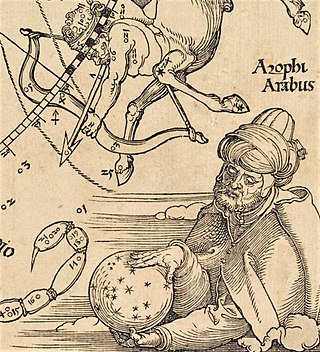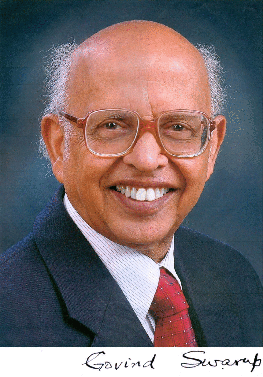This article only references primary sources.(September 2024) |
Wayne Orchiston | |
|---|---|
| Born | New Zealand |
| Occupation | Astronomer |
Wayne Orchiston is a New Zealand born Australian astronomer.
This article only references primary sources.(September 2024) |
Wayne Orchiston | |
|---|---|
| Born | New Zealand |
| Occupation | Astronomer |
Wayne Orchiston is a New Zealand born Australian astronomer.
Orchiston was born in New Zealand and lived the early part of his life in New Zealand. He moved to Australia for his higher education. He has also lived in the United States. [1]
After completing secondary school in New Zealand, Orchiston worked as a Technical Assistant in radio astronomy at Australia's Commonwealth Scientific and Industrial Research Organisation while completing a First Class Honours BA in prehistory as a part-time student at the University of Sydney. He remained at University of Sydney for his PhD, studying New Zealand's environmental prehistory. After completing post-doctoral work at the University of Melbourne, he spent time working in museums before returning to work in variable star astronomy. [1]
He is currently the adjunct professor of astronomy in the Centre for Astrophysics at the University of Southern Queensland. [2] [3]
He is also the co-editor of the Journal of Astronomical History and Heritage. [2]
Orchiston is the recipient of 2024's LeRoy E. Doggett Prize for Historical Astronomy. The prize is awarded every other year by the AAS Historical Astronomy Division to someone "who has significantly influenced the field of the history of astronomy by a career-long effort". [1]
His notable books include: [4] [ better source needed ]
As of July 2024 [update] , ResearchGate lists 698 publications, which have a total of 3,838 citations. [5] Google Scholar estimates his h-index as 28, with his most-cited article being "Michell, Laplace and the origin of the black hole concept" (together with C Montgomery and I Whittingham) in the 2009 Journal of Astronomical History and Heritage 12. [6]

ʿAbd al-Raḥmān al-Ṣūfī was a Persian Muslim astronomer. His work Kitāb ṣuwar al-kawākib, written in 964, included both textual descriptions and illustrations. The Persian polymath Al-Biruni wrote that al-Ṣūfī's work on the ecliptic was carried out in Shiraz. Al-Ṣūfī lived at the Buyid court in Isfahan.

The American Astronomical Society is an American society of professional astronomers and other interested individuals, headquartered in Washington, DC. The primary objective of the AAS is to promote the advancement of astronomy and closely related branches of science, while the secondary purpose includes enhancing astronomy education and providing a political voice for its members through lobbying and grassroots activities. Its current mission is to enhance and share humanity's scientific understanding of the universe as a diverse and inclusive astronomical community.
John Francis Skjellerup was an Australian amateur astronomer who spent two decades working as a telegraphist in South Africa.
Jeremiah Paul "Jerry" Ostriker is an American astrophysicist and a professor of astronomy at Columbia University and is the Charles A. Young Professor Emeritus at Princeton, where he also continues as a senior research scholar. Ostriker has also served as a university administrator as Provost of Princeton University.
Walter Frederick Gale was an Australian banker. Gale was born in Paddington, Sydney, New South Wales. He had a strong interest in astronomy and built his first telescope in 1884.

The Paul Wild Observatory, also known as the Narrabri Observatory and Culgoora Observatory, is an astronomical research facility located about 24 km west of Narrabri, New South Wales, Australia. It is the home of the Australia Telescope Compact Array, and the Culgoora Solar Observatory.

Kenneth Charles Freeman is an Australian astronomer and astrophysicist who is currently Duffield Professor of Astronomy in the Research School of Astronomy and Astrophysics at the Mount Stromlo Observatory of the Australian National University in Canberra. He was born in Perth, Western Australia in 1940, studied mathematics and physics at the University of Western Australia, and graduated with first class honours in applied mathematics in 1962. He then went to Cambridge University for postgraduate work in theoretical astrophysics with Leon Mestel and Donald Lynden-Bell, and completed his doctorate in 1965. Following a postdoctoral appointment at the University of Texas with Gérard de Vaucouleurs, and a research fellowship at Trinity College, Cambridge, he returned to Australia in 1967 as a Queen Elizabeth Fellow at Mount Stromlo. Apart from a year in the Kapteyn Institute in Groningen in 1976 and some occasional absences overseas, he has been at Mount Stromlo ever since.

Govind Swarup was a pioneer in radio astronomy. In addition to research contributions in multiple areas of astronomy and astrophysics, he was a driving force behind the building of "ingenious, innovative and powerful observational facilities for front-line research in radio astronomy".

Frederick Garnett Watson AM is an English-born astronomer and popular scientist in Australia. He holds the role of Australia's First Astronomer at Large within the Commonwealth Government of Australia, relaying the important aspects of Australian astronomy to the government, the general public, and associated organisations.

Frances Elizabeth Somerville Alexander was a British geologist, academic, and physicist, whose wartime work with radar and radio led to early developments in radio astronomy and whose post-war work on the geology of Singapore is considered a significant foundation to contemporary research. Alexander earned her PhD from Newnham College, Cambridge, and worked in Radio Direction Finding at Singapore Naval Base from 1938 to 1941. In January 1941, unable to return to Singapore from New Zealand, she became Head of Operations Research in New Zealand's Radio Development Lab, Wellington. In 1945, Alexander correctly interpreted that anomalous radar signals picked up on Norfolk Island were caused by the sun. This interpretation became pioneering work in the field of radio astronomy, making her one of the first women scientists to work in that field, albeit briefly.
Brian J. Boyle is a Scottish astrophysicist based in Sydney, Australia from 1996 to 2019, and in Queenstown, New Zealand from 2020. His primary research interests are in the fields of quasars, active galaxies and cosmology.
Ronald Alexander McIntosh was a New Zealand journalist who was most famous for his contributions to astronomy.
The Journal of Astronomical History and Heritage is a peer-reviewed academic journal. As of 2021, the journal is published four times per year and is logged through the Astrophysics Data System. It publishes research papers, reviews, short communications, IAU reports, and book reviews on all aspects of astronomical history.
Elaine Margaret Sadler is an Australian astrophysicist. She is the Australia Telescope National Facility Chief Scientist and a Professor of Astrophysics in the School of Physics at the University of Sydney. She was elected as a fellow of the Australian Academy of Science (AAS) in 2010 and commenced a 4-year term as Foreign Secretary of the AAS in 2018. She was previously director of the CAASTRO centre (2014-2018).

Melanie Johnston-Hollitt is an Australian astrophysicist and professor. She has worked on the design, construction, and international governance of several radio telescopes including the Low Frequency Array (LOFAR), the Murchison Widefield Array (MWA) and the upcoming Square Kilometre Array (SKA). She was the director of the Murchison Widefield Array until December 2020 and is a professor at the Curtin Institute of Radio Astronomy at Curtin University and the International Centre for Radio Astronomy Research. Since August 2020, Melanie Johnston-Hollitt is the director of the Curtin Institute for Data Science.

The Linden Observatory Complex is a heritage-listed former observatory and manufacture of optical precision implements and now residence, museum, observatory, education facility and meeting venue located at 91 – 111 Glossop Road, Linden, City of Blue Mountains, New South Wales, Australia. It was designed and built by Ken Beames from 1938 to 1948. It is also known as K Beames Engineering Co. The property is owned by the Linden Observatory Trust. It was added to the New South Wales State Heritage Register on 5 March 2010.

The Carkeek Observatory is the earliest surviving astronomical observatory in New Zealand. It was built around 1867 by retired customs officer and amateur astronomer Stephen Carkeek on his farm south of Featherston in the Wairarapa. The timber building was in two parts: an octagonal room with a rotating canvas dome, and a rectangular annex. Carkeek died in 1878 and the disused observatory became a farm equipment shed. As late as the 1980s it was still largely intact, but is now a partial ruin, although the annex and parts of the rotation mechanism can still be seen in place. It was added as a Category I historic place in the New Zealand Heritage List on 26 June 2020.

Stephen James Carkeek was a New Zealand civil servant, the colony's first Inspector of Customs, and the builder of the oldest-surviving observatory in the country.

Charles Tsun-Chu Liu is an American astronomer and astronomy educator. His research interests include merging and colliding galaxies, active galactic nuclei, and the star formation history of the universe. He is a former director of the William E. Macaulay Honors College and The Verrazano School at the City University of New York's College of Staten Island. He currently serves as a professor of physics and astronomy at the College of Staten Island, and as President of the Astronomical Society of New York. Liu is the 2024 winner of the American Astronomical Society's (AAS) prestigious Education Prize, and was named an AAS fellow in 2019.
Jacqueline K. (Jackie) Faherty is an American astronomer specializing in infrared astronomy and the observation of nearby stars and brown dwarfs, and known for her public outreach in space science. She works at the American Museum of Natural History as a senior scientist in the museum's Department of Astrophysics and a senior education manager in the Department of Education.